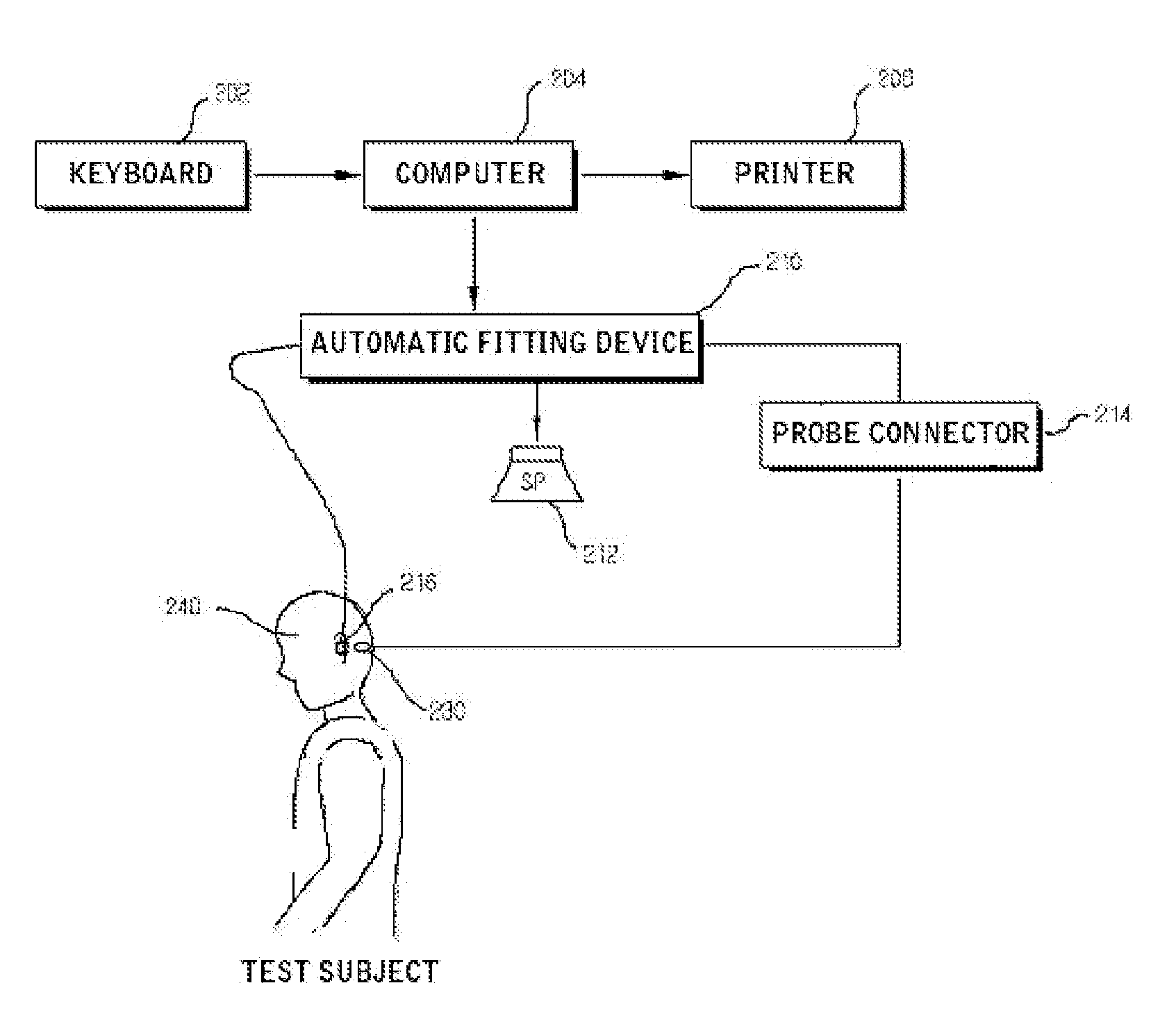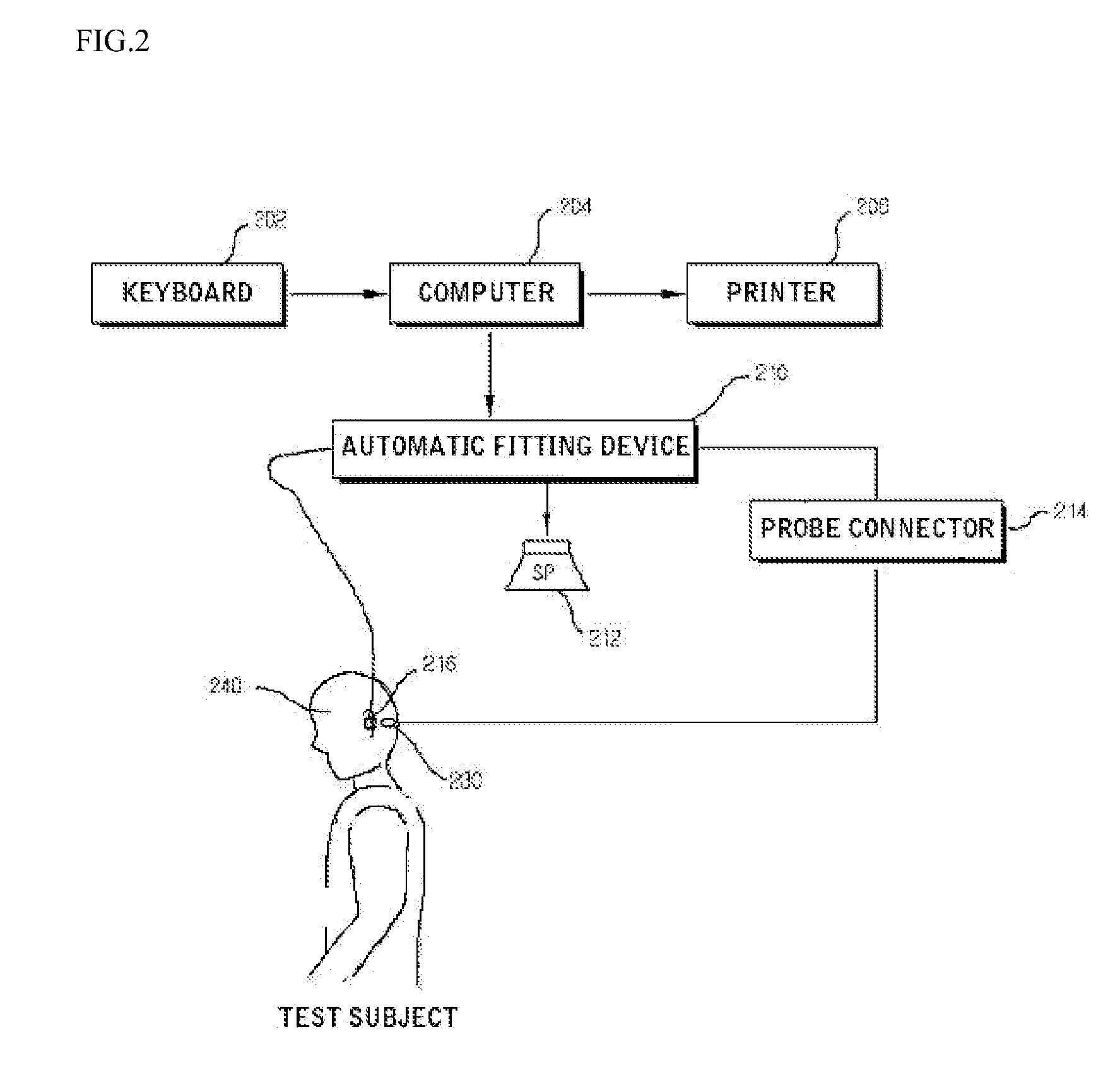Method of automatically fitting hearing aid
a hearing aid and automatic technology, applied in hearing aid testing/monitoring, hearing aid adaptation, electrical equipment, etc., can solve the problems of inability to achieve accurate individual fitting, inconvenient conventional procedures for infants or elderly people, and inability to accurately measure the individual fit, etc., to achieve the effect of reducing maintenance costs
- Summary
- Abstract
- Description
- Claims
- Application Information
AI Technical Summary
Benefits of technology
Problems solved by technology
Method used
Image
Examples
Embodiment Construction
[0030]FIG. 2 shows in summarized form the automatically fitting system according to an embodiment of the invention.
[0031]Referring to FIG. 2, the automatically fitting system includes a keyboard 202, a computer 204, a printer 206, an automatic fitting device 210, a speaker 212, a probe connector 214 connected to a hearing aid 230, a probe microphone 216 connected to the automatic fitting device 210, and the hearing aid 230 connected to the probe connector 214.
[0032]The computer 204 has an operating system(O / S) and fitting-related program loaded therein. In response to an operator's manipulation of the keyboard 202, the computer 204 controls the automatic fitting device 210 and manages various kinds of data. Also, the computer 204 monitors the operation state to exhibit the monitored data to the operator and allows the result to be printed by the printer 206.
[0033]The automatic fitting device 210 is a means performing the whole fitting process controlled by the computer 204, monitors...
PUM
 Login to View More
Login to View More Abstract
Description
Claims
Application Information
 Login to View More
Login to View More - R&D
- Intellectual Property
- Life Sciences
- Materials
- Tech Scout
- Unparalleled Data Quality
- Higher Quality Content
- 60% Fewer Hallucinations
Browse by: Latest US Patents, China's latest patents, Technical Efficacy Thesaurus, Application Domain, Technology Topic, Popular Technical Reports.
© 2025 PatSnap. All rights reserved.Legal|Privacy policy|Modern Slavery Act Transparency Statement|Sitemap|About US| Contact US: help@patsnap.com



